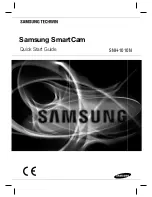
18
Important:
The instrument should only be operated with
the original cuff.
Correct posture
• Rest for approx. 5 minutes before each measurement.
Otherwise there may be divergences.
• You can perform the measurement
while sitting or lying. To carry out a
blood pressure measurement, make
sure you are sitting comfortably with
your arms and back leaning on
something. Do not cross your legs.
Place your feet flat on the ground. Make sure to rest
your arm and move it. Always make sure that the cuff
is at heart level. Otherwise significant deviations can
occur. Relax your arm and the palm of your hand.
• In order not to distort the result, it is important to keep
still during the measurement and not talk.
Measuring blood pressure
• Switch on the blood pressure monitor with the but-
ton.
• Before the measurement, the last saved test result is
briefly displayed. If there is no measurement in the
memory, the instrument always displays the value .
• The cuff automatically inflates. Cuff air pressure is
released slowly. If a tendency towards high blood pres-
sure is already detectable, the cuff is pumped up again
and cuff pressure increased further. As soon as a heart
rate is detected, the heart rate symbol
is displayed.
• Heart rate, systolic and diastolic blood pressure are dis-
played.
• You can interrupt measurement at any time by pressing
the button.
•
_ appears if it has not been possible to perform the
measurement properly. Observe the section in these
instructions on error messages/troubleshooting and
repeat the measurement.
• The test result is saved automatically.
Evaluating results
Cardiac arrhythmia:
This instrument can identify possible cardiac arrhythmia
disorders during measurement and if necessary indicates
the measurement with the flashing icon
.
This may be an indicator for arrhythmia. Arrhythmia
is a condition where the heart rhythm is abnormal as
a result of defects in the bioelectrical system control-
ling the heart beat. The symptoms (omitted or prema-
ture heart beats, slow or excessively fast heart rate) may
be caused, among other things, by heart disease, age,
physical predisposition, excessive use of stimulants,
stress or lack of sleep. Arrhythmia can only be ascer-
tained through examination by your doctor.
• • • • • • • • • • • • •
Содержание BC 31
Страница 64: ...64 Beurer 1 2...
Страница 66: ...66 1...
Страница 67: ...67 2002 96 EC WEEE Waste Electrical and Electronic Equipment...
Страница 69: ...69 24 M M M 1 12 5 1 5...
Страница 70: ...70 _ 5...
Страница 71: ...71 6 3 180 110 2 160 179 100 109 1 140 159 90 99 130 139 85 89 120 129 80 84 120 80 1999...
Страница 72: ...72 60 M M M 3 7 _ 300 160 IEC 60601 1 8...
Страница 74: ...74 180 2x 1 5 AAA IPX0 AP APG BF EN60601 1 2 93 42 EC EN1060 1 1 EN1060 3 3 IEC80601 2 30 2 30 10 36...
Страница 75: ...75 DE 93 01352 05 06 2012 5 218 89077 OOO 109451 62 2 3 109451 62 2 495 658 54 90 bts service ctdz ru...
Страница 91: ...91...
Страница 92: ...92 750 791 0513 Irrtum und nderungen vorbehalten...
















































